The five competition winners
13. An automotive perspective to save motorcyclists
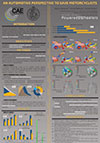
Alberto Perticone, University of Florence, Italy
Niccolò Baldanzini, University of Florence, Italy
Daniele Barbani, University of Florence, Italy
Abstract
Worldwide, PTWs are typically over-represented in crash statistics and this trend is increasing. This poster illustrates the potential of a belted restraint device to help save motorcyclists’ lives. Different crash scenarios are investigated throughout HyperStudy via multi-body simulations, whereby biomechanical index scores are gathered. Insights on human body injuries are produced for selected scenarios, via finite-element simulations.
Preliminary evaluations reveal encouraging outcomes, but further studies are needed to provide riders with such a safety device to protect them during crashes.
Automotive
22. Multi-step Deep Learning-based Reduced Order Models for Geometric Nonlinearities in MEMS
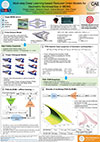
Giorgio Gobat, Politecnico di Milano, Dipartimento di Ingegneria Civile e Ambientale, Italy
Stefania Fresca, Politecnico di Milano, Dipartimento di Matematica, MOX, Italy
Andrea Manzoni, Politecnico di Milano, Dipartimento di Matematica, MOX, Italy
Attilio Frangi, Politecnico di Milano, Dipartimento di Ingegneria Civile e Ambientale, Italy
Abstract
The simulation of resonating Micro-Electro-Mechanical systems (MEMS) poses computational challenges since high nonlinearities are involved. In this work, we apply multi-step Deep Learning-based Reduced Order Models (ms-DLROMs) to a MEMS micromirror in order to build a parametrized virtual representation of this system. The ms-DLROM combines the recently proposed DL-ROM framework with traditional Proper Orthogonal Decomposition (POD)-Galerkin ROMs. As result, the ms-DLROM provides reliable reconstructions of the device motion in real-time when millions of inquiries are considered.
Civil Engineering
40. The filling process of a flexible pouch: two-way coupling of particle-based CFD and multi-flexible-body dynamics simulation
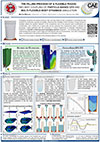
Matteo Berlato, University of Trento, Italy
Abstract
Packaging companies are always striving to stay one step ahead of their competitors in providing the best solutions for production capacity and quality, preserving the versatility of their machines. Many variables affect the dynamic behavior of components and products when accelerations are considerable. Coesia partnered with the University of Trento and EnginSoft to simulate a stand-up pouch packaging machine (Doypack®). The ambitious goal of deeply understanding the process in each stage and selecting the best set of parameters is addressed in this work by performing a co-simulation study.
Food & Beverage
41. Metacarpal Glove Model for Impact Testing Simulation on Human Hand
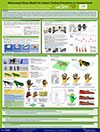
Eduardo M. Sosa, West Virginia University, United States of America, Morgantown, West Virginia
Marta M. Moure, Universidad Carlos III of Madrid, Madrid, Spain
Álvaro García Rincón, Universidad Carlos III of Madrid, Madrid, Spain
Abstract
This work presents a model created to reproduce the impact of a small-sized, low-mass object impacting the dorsum of a flattened hand wearing a metacarpal glove. A finite element model of the hand and glove was created with the CAE module available in Simulia/Abaqus. The model includes the complete hand bone structure, surrounding soft tissues, and the layers of a metacarpal glove. The simulations include impacts on the fingers, knuckles, and metacarpal regions of the hand. The impact reaction forces are computed to be compared to controlled impact tests performed on cadaveric hands.
Biomechanics
48. Optimization of Mechanical Components of a High-Altitude Wind Generator

Martina Picoco, Politecnico di Torino, Italy
Giorgio Zavarise, Department of Structural, Geotechnical and Building Engineering (DISEG), Politecnico of Turin, Italy
Gian Mauro Maneia, Kitenergy S.r.l., Turin, Italy
Giuseppe Quaglia, Department of Mechanical and Aerospace Engineering (DIMEAS), Politecnico of Turin, Italy
Abstract
In this work, a particular energy source is taken into account: high altitude wind energy, produced by KE60 mkII prototype, Kitenergy. The goal of the project is the mechanical redesign of some machine components and a topological optimization through the use of Ansys Mechanical Solver, after a deep evaluation of the prototype behaviour under different loads. The currently oversized system components that needed redesign were analyzed, in order to achieve a reduction of manufacturing costs of the future commercial product. Eventually, the desired structure was subjected to solid modeling in a 3D CAD environment and validation through finite element analysis. The redesign process seems to have achieved remarkable results in terms of optimizations of various prototype components and have been favorably accepted by Kitenergy and some of these will be included and evaluated in the future prototype revision plan.
Mechanics
The finalists
01. On-orbit camera self-focusing with conjugated optical fiber waveguides
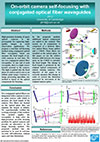
Jin Li, University of Cambridge, United Kingdom
Abstract
High-precision focusing of space optical cameras is the prerequisite for capturing highquality images in earth observation applications. We propose a real-time self-focusing method using conjugated optical fiber waveguides which can measure the focal length of onorbit cameras in real time. We use two conjugated optical fiber
waveguides. At one end of each waveguide, there is a light source located external to the camera. The light is guided into the focal plane of camera and it acts as an
infinite point target. Contrary to image processing algorithm, our method is based on the optical components for focusing.
Aerospace
02. Fire Fighting Drone
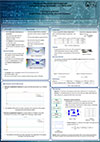
Francesco Pelorossi, University of Roma Tre, Italy
Lorenzo Greco, University of Roma Tre, Italy
Giulia Gargioli, University of Roma Tre, Italy
Abstract
In this work was developed a fire fighting drone, a quadcopter able to carry a certain amount of fireballs and to release them right above the fire area. In the first place a structural analysis has been carried on through Inventor Nastran. In the second place has been estimated the better design in respect of costs, autonomy and the maximum range each configuration could guarantee. In the third phase, has been carried on a study for the stability in two different conditions: Gust and weight variation. The last part studied was the optimal flight path in case of obstacles.
Aerospace
03. Rationally designed lattice structure for human cancellous bone vertebral implants
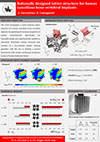
Andrea Sorrentino, University of Modena and Reggio Emilia, Italy
Davide Castagnetti, University of Modena and Reggio Emilia, Italy
Abstract
The work presents a novel, additively manufactured, titanium, bone-mimicking biomaterial with negative Poisson’s ratio. The designed lattice structure exploits the counter-intuitive features of auxetic metamaterials to obtain a tailored macrostructure with mechanical properties close to that of human vertebral cancellous bones. The experimental validation confirms the peculiar response of the structure.
Biomechanics
04. Fuel saving analysis on merchant vessel: wingsails as an auxiliary propulsion system
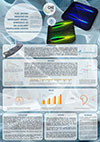
Filippo Giuntini, University of Pisa, Italy
Francesca Leonetti , University of Pisa, Italy
Abstract
Today the issue of decarbonisation has assumed significant importance: limiting carbon dioxide
emissions is the main objective of a sustainable perspective. Since merchant shipping accounts for about 3% of CO2 emissions, it is essential to reduce fuel consumption with alternative systems. The case study aims to evaluate the fuel savings on the transmediterranean merchant ship RoPax Ciudad de Mahón using foldable rigid wingsails with NACA0015 airfoil free to rotate 360 degrees around a pivot through automatic control.
Energy
05. Development of a CAE solution for the multi-method study, design and optimization of acoustic packages
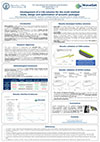
Dario Magliacano, University of Napoli Federico II, Italy
Alessandro Casaburo, WaveSet S.R.L., Italy
Giuseppe Petrone, University of Napoli Federico II, Italy
Francesco Franco, University of Napoli Federico II, Italy
Sergio De Rosa, University of Napoli Federico II, Italy
Abstract
Noise pollution in urban centers represents a key point in the ecological transition. The main scope of this research is represented by the development of a multi-method toolbox platform for the study, design and optimization of innovative acoustic packages, in order to reduce sound transmission in transportation and buildings. This work is performed in collaboration with WaveSet S.R.L., a start-up specialized in Vibrations and Acoustics for the Aerospace, Automotive, Naval, Railway and Energy engineering sectors.
Aerospace
06. Autonomous 3D geometry reconstruction through robot-manipulated optical sensors
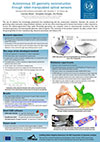
Carmelo Mineo, University of Palermo, Italy
Donatella Cerniglia, University of Palerrmo, Italy
Vito Ricotta, University of Palermo, Italy
Abstract
The use of robotics has increasingly penetrated the manufacturing and the construction industries. However the process of generating robot tool-paths, using simulation software, can be very time-consuming and an human intervention is often required to correct the software-generated robot paths. Promising approaches use computer vision to autonomously reconstruct the real workpiece geometry and automatically generate robot programs. The outcomes of the present research can play a pivotal role in the growing fields of smart manufacturing, industrial automation and Industry 4.0.
Mechanics
07. Modeling and simulation of lightweight lattice structures for impact energy absorption
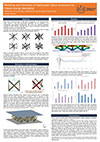
Antonio Coluccia, Politecnico di Torino, Italy
Abstract
Metal lattice structures possess a wide range of application in the mechanical field, mainly because of their high functionality, lightweight and the possibility to be manufactured using additive manufacturing. One of the most important application nowadays for these materials, especially when it comes to aerospace, biomedical and automotive sectors, is as energy absorbers.
A specific set of lattice cells, selected among the most promising ones for energy absorption, has been tested using FEA (Ansys Workbench 2020 R1). Cells are accurately selected so that bcc and fcc allow the investigation of the effects of different struts orientation while effects of combination and reinforcement are studied testing fbcc and –z cells.
All of the results obtained are therefore used to establish construction guidelines and a methodology for lattice simulations that can be valid for energy absorption analysis.
Mechanics
08. The use of open-source platforms and additive manufacturing in assistive technology products
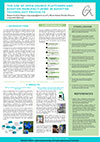
Raquel Cañete Yaque, Design Engineering Department, Universidad de Sevilla, Spain
María Estela Peralta Álvarez, Design Engineering Department, Universidad de Sevilla, Spain
Abstract
Technology is extremely beneficial when integrated in products for people with accentuated needs, as it allows for adaptability. However, these products are usually very expensive. To solve this, open-source electronic platforms and additive manufacturing, are making assistive technology affordable, replicable in an agile way and with reduced costs. It is essential to stress the potential of open-source platforms and additive manufacturing in the field of assistive technology to embrace accessibility and universal design. These projects explore a methodology created to develop concepts which embrace open-source coding and additive manufacturing to satisfy the needs of children with ASD.
Consumer Goods
09. CFD simulations of combustible dust dispersion in the 20 L and 1 m3 standard vessels
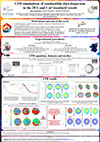
Maria Portarapillo, University of Naples Federico II, Italy
Roberto Sanchirico, Istituto di Scienze e Tecnologie per l'Energia e la Mobilità Sostenibili (STEMS-CNR), Naples, Italy
Almerinda Di Benedetto, University of Naples Federico II, Italy
Abstract
In chemical processes several accidents are imputable to explosions of combustible dusts. To characterize the explosion severity, the explosibility parameters are evaluated in 20 L and/or 1 m3 vessels, according to standard procedures. There are two main requirements for repeatable and reliable measurements of the explosibility parameters: a uniform dispersion of solid particles inside the test vessel and a homogeneous degree of turbulence. CFD models of dust dispersion were developed to get insight into the fluid flow and the dust dispersion established inside both the vessels.
Environmental
10. A computational model of the zebrafish heart
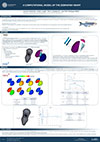
Ludovica Cestariolo, Politecnico di Milano, Italy
Giulia Luraghi, Politecnico di Milano, Italy
Pierre L'Eplattenier, Livermore Software Technology Corporation, Livermore CA, US,
Jose Felix Rodriguez Matas, Politecnico di Milano, Italy
Abstract
Recent studies suggest that the zebrafish's heart physiology resembles that of humans in many aspects. Thus, the zebrafish has been proposed as a potential model for genetic and pharmacological screenings of factors that could affect heart functions.
Despite the rising interest, very few studies concern the development of a computational model of the zebrafish heart.
In this work, a full electrophysiological model of a 3 dpf zebrafish was developed.
The results focus on the main electrophysiological parameters, the main characteristics of the AP morphology, and the analysis of the ECG.
Biomechanics
11. A numerical fluid-structure interaction methodology to model the thoracic endovascular aortic repair procedure
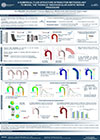
Anna Ramella, Politecnico di Milano, Italy
Elena Redaelli, Universidad de Zaragoza, Spain
Francesco Migliavacca, Politecnico di Milano, Italy
Michele Conti, Università di Pavia, Italy
Santi Trimarchi, Università degli Studi di Milano, Italy
Giulia Luraghi, Politecnico di Milano, Italy
Abstract
Thoracic Endovascular Aortic Repair (TEVAR) is a minimally invasive technique to treat thoracic aortic pathologies, as aneurysms and dissections. This work develops a numerical workflow to virtually implant a stent-graft and to reproduce the pre- and post-TEVAR hemodynamics in an idealized aorta through FSI simulations. Firstly, the explicit Finite Element solver LS-DYNA (Ansys) is employed to carry out the stent-graft deployment into an idealized aorta with physiological anatomy. Then, strongly coupled, 2-way, and boundary-fitted FSI simulations are performed using the ICFD solver of LS-DYNA.
Biomechanics
12. Numerical modelling of an unconfined ship propeller jet

Agostino Lauria, Dipartimento di Ingegneria Civile, University of Calabria, Italy
Domenico Ferraro, Dipartimento di Ingegneria Civile, University of Calabria, Italy
Nadia Penna, Dipartimento di Ingegneria Civile, University of Calabria, Italy
Roberto Gaudio, Dipartimento di Ingegneria Civile, University of Calabria, Italy
Abstract
A propeller rotating around a hub with radiating blades is a common propulsion system for a ship. The rotating propeller produces a turbulent jet that impacts on the seabed and causes bed scouring and deposition of sediments. Numerical simulations were performed to analyze the flow behavior in the case of interactions between a propeller and a uniform flow acting on a deformed bed. The flow field was simulated by solving the RANS equations. A particular phenomenon observed as the Coanda effect, that causes the propeller jet to attach to the bed, could be observed only thanks to numerical simulations.
Marine
13. An automotive perspective to save motorcyclists

Alberto Perticone, University of Florence, Italy
Niccolò Baldanzini, University of Florence, Italy
Daniele Barbani, University of Florence, Italy
Abstract
Worldwide, PTWs are typically over-represented in crash statistics and this trend is increasing. This poster illustrates the potential of a belted restraint device to help save motorcyclists’ lives. Different crash scenarios are investigated throughout HyperStudy via multi-body simulations, whereby biomechanical index scores are gathered. Insights on human body injuries are produced for selected scenarios, via finite-element simulations.
Preliminary evaluations reveal encouraging outcomes, but further studies are needed to provide riders with such a safety device to protect them during crashes.
Automotive
14. Optimization of sandblasting gun
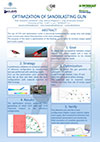
Marco Maganzi, University of Pisa, Italy
Giovanni Lombardi, University of Pisa, Italy
Emanuele Grasso, NORBLAST S.r.l., Bologna, Italy
Abstract
The use of CFD and optimization cycles is becoming fundamental for saving time and design costs in every area where fluid dynamics is the main protagonist.
The purpose of this work is optimization of the blasting gun in order to increase output speed and media supply.
Mechanics
15. Cable Routing Optimization of a Cable-Driven Robot
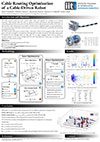
Paolo Guardiani, Istituto Italiano di Tecnologia, Genova, Italy
Daniele Ludovico,Istituto Italiano di Tecnologia, Genova, Italy
Alessandro Pistone, Istituto Italiano di Tecnologia, Genova, Italy
Darwin G. Caldwell, Istituto Italiano di Tecnologia, Genova, Italy
Carlo Canali, Istituto Italiano di Tecnologia, Genova, Italy
Abstract
Cable-driven robots have been adopted in many fields for accessing harsh and confined environments that may be inaccessible or dangerous for humans.
The cable actuation makes the robot structure light, robust and operable via a minimal set of on-board electronics. At the same time, cable routing can be very complex, and this can have a significant impact on system performance. The interaction between the cables and the structure can increase the cable loads considerably, thus decreasing the payload of the robot.
In this work, two cable routing optimization methods, based on a genetic algorithm, have been proposed with the aim of optimizing the kinematics and forces of the robot.
Mechanics
16. Dynamic behaviour of a battery pack for agricultural applications
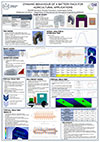
Salvatore Martelli, Politecnico di Torino, Italy
Francesco Mocera, Politecnico di Torino, Italy
Costamagna Matteo, Politecnico di Torino, Italy
Abstract
Fight and contrast against climate changes and global warming can be considered the most important challenge for the next decades. One of the most involved sectors is the one related to the carriage of passengers and goods, and, recently, also the work vehicles too. The agricultural machines and tractors are no exception to this. Indeed, agricultural industry is the second contributor in terms of pollutants’ emissions. So, research about agricultural machinery is focusing itself about the development of more sustainable propulsion systems such as hybrid or full-electric solutions. One of the most important components of a hybrid or full electric vehicle is the battery pack. The lack of adequate vibration isolation is the main cause of battery pack failure during operation. In the field of the agricultural vehicles, since the maximum speed is quite low and the weight of the various subsystems are high, combined with heavy working cycles, the dynamic analysis of the battery pack focuses on its low frequency behaviour. In this context this work is collocated. It will be analysed the dynamic behaviour of a battery pack, thought for a plug-in hybrid electric orchard tractor, through some simulations obtained taking advantage of FEM and multibody software. In particular, it will be illustrated the dynamic behaviour of the battery while the tractor is moving on a bumpy road and when the tractor chassis is subjected to an impulsive load.
Mechanics
17. Structural optimization of a specimen for tensile axial loading for a lattice material
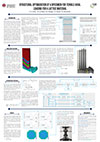
Domenico Antonio Rita, University of Trento, Italy
Raffaele De Biasi, University of Trento, Italy
Michele Dallago, University of Trento, Italy
Damiano Pasini, McGill University, Canada
Matteo Benedetti, University of Trento, Italy
Abstract
A standard for tensile fatigue tests on lattice structures has yet to be defined. A novel specimen geometry for fatigue testing is proposed having flanged bolted joints as mechanical interfaces. The aim of this work is to optimize the specimen geometry to get a uniform distribution of internal loads within the middle cross-section. The definition of the optimal values for the geometry was found using the finite element simulation along with the homogenization technique.
Biomechanics
18. A computational study to assess the impact of vascular morphology on the outcome of endovascular thrombectomy
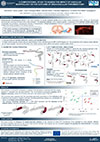
Sara Bridio, Politecnico di Milano, Italy
Giulia Luraghi, Politecnico di Milano, Italy
Jose Felix Rodriguez Matas, Politecnico di Milano, Italy
Gabriele Dubini, Politecnico di Milano, Italy
Francesco Migliavacca, Politecnico di Milano, Italy
Abstract
Endovascular thrombectomy (EVT) is the main treatment for acute ischemic stroke due to large vessel occlusions. It consists in removing the occluding thrombus from the patient's cerebral arteries with a stent-retriever. The tortuous anatomy of the cerebral arteries complicates the procedure, reducing the chances of restoring the perfusion. In this work, a computational study is conducted to investigate the impact of patient-specific vascular geometry on the outcome of virtual simulations of EVT, finding a combination of geometric parameters able to discriminate cases with different outcome.
Biomechanics
19. A Lattice Spring Model for Extracting Elastic Constants from AFM Nanoindentation Tests
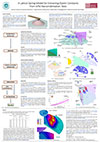
Lorenzo Vaiani, Dipartimento di Meccanica, Matematica e Management - Politecnico di Bari, Italy
Antonio Boccaccio, Dipartimento di Meccanica, Matematica e Management - Politecnico di Bari, Italy
Abstract
A Coarse-Grained Lattice Spring Model (CG-LSM) for extracting elastic constants of subcellular components in mesenchymal stem cells (MSCs) subjected to AFM tests with large nonlinear deformations was proposed. An optimization algorithm compared the curves predicted by LSM to real experimental AFM curves, until a best fit was reached. The extracted elastic constants were compared to the values coming from Hertz Theory and FEM, showing a good agreement. The proposed LSM approach resulted in a fast and stable procedure (66% reduction in time), which can be extended to other biological materials.
Biomechanics
20. Thermo-magnetic FEM simulation of a PM synchronous motor with input data from telemetry driving cycles
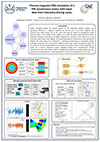
Stefano Venuti, Politecnico di Torino, Italy
Aurelio Somà, Politecnico di Torino, Italy
Francesco Mocera, Politecnico di Torino, Italy
Abstract
Nowadays, the requirements to reduce greenhouse gas emissions and to provide a healthy and more habitable environment, has led to the development of several sustainable alternative for eco-mobility. Since the improvement of internal combustion engine has reached a steady state point in terms of overall efficiency, the increasingly stringent requirement imposed by international normative standards leading automotive companies to find other alternatives to reduce pollution. Thanks to the exponentially growth of power electronics, the huge interest on research of high energy and power density batteries and the more integration of the embedded systems, the central role of the electric drive has taken over on most of vehicles applications. The wide use of permanent magnets synchronous motors for electric vehicles application has rapidly spread out, thanks to their capability to provide high torque and efficiency with low weight and size. Since the natural behaviour of permanent magnets to demagnetize under severe conditions, both coupled thermal and magnetics, the necessity to understand and predict the phenomena is mandatory. This work carries out a performance analysis in duty cycle, given by real CAN and GPS readings in a studied pathway, with discussion of numerical and graphic technical evaluations. Finite element software has also been used for coupled electromagnetic and thermal calculation to set the magnets working point and establish the temperature distribution within the motor itself during the whole thermal transient. A particular overview is done on the dependence of material used and different cooling solutions adopted.
Mechanics
21. Virtual Prototyping of a Compliant Robotic Wrist
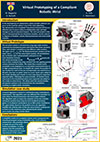
Mario Baggetta, University of Genova, Italy
Giovanni Berselli, University of Genova, Italy
Gianluca Palli, University of Bologna, Italy
Claudio Melchiorri, University of Bologna, Italy
Abstract
This work deals with the virtual prototyping of a compliant robotic wrist that is aimed for use in a human-robot collaborative environment. The mobility of the wrist is provided by the use of two pairs of Compliant Transmission Elements (CTEs) actuated by servo-motors and tendon transmission. The virtual prototype of the wrist allows easy testing of the behaviour of the tendon transmission and provides an important aid in selecting the right servo-motors for each application.
Mechanics
22. Multi-step Deep Learning-based Reduced Order Models for Geometric Nonlinearities in MEMS

Giorgio Gobat, Politecnico di Milano, Dipartimento di Ingegneria Civile e Ambientale, Italy
Stefania Fresca, Politecnico di Milano, Dipartimento di Matematica, MOX, Italy
Andrea Manzoni, Politecnico di Milano, Dipartimento di Matematica, MOX, Italy
Attilio Frangi, Politecnico di Milano, Dipartimento di Ingegneria Civile e Ambientale, Italy
Abstract
The simulation of resonating Micro-Electro-Mechanical systems (MEMS) poses computational challenges since high nonlinearities are involved. In this work, we apply multi-step Deep Learning-based Reduced Order Models (ms-DLROMs) to a MEMS micromirror in order to build a parametrized virtual representation of this system. The ms-DLROM combines the recently proposed DL-ROM framework with traditional Proper Orthogonal Decomposition (POD)-Galerkin ROMs. As result, the ms-DLROM provides reliable reconstructions of the device motion in real-time when millions of inquiries are considered.
Civil Engineering
23. Multi-objective optimization to get the best tolerance-cost design - An effective application on a high performance engine
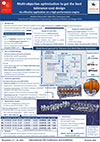
Andrea Petruccioli, University of Modena and Reggio Emilia, Italy
Fabio Pini, University of Modena and Reggio Emilia, Italy
Francesco Leali, University of Modena and Reggio Emilia, Italy
Abstract
To guarantee quality and reduce costs, a multi-disciplinary and integrated approach is required for design optimization. Since tolerances have a central role due to their impact on both performance and manufacturing, the Design-to-Cost and Design-for-Tolerancing approaches are integrated to optimize permissible variations to validate economic and functional requirements. The Model-Based approach for Tolerance-Cost Optimization is proposed and applied on a high-performance V12 engine. Results provide the optimal configurations of tolerances to increase quality and minimize product costs.
Automotive
24. Design and development of a permanent mould for separately poured specimens with controlled microstructure by numerical process simulation
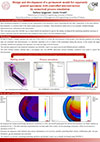
Stefano Spigarolo, Università degli studi di Padova, Italy
Giulio Timelli, Università degli studi di Padova, Italy
Abstract
he aim of this work is to design and develop a permanent mould for separately poured specimens with controlled microstructure by numerical process simulation.
Starting from a reference die, several variations both in boundary process conditions and permanent mould shape and dimensions allowed to perfectly mimic the microstructure of the desired industrial product.
With the optimized specimen it is possible to avoid all the mechanical processing necessary to take a specimen from the product, obtaining a flexible way to test different alloys compositions and heat treatments.
Automotive
25. Morphing cad models onto as-built geometries: ITER WP test case

Edoardo Pompa, University of Rome Tor Vergata, Italy
Stefano Porziani, University of Rome Tor Vergata, Italy
Corrado Groth, University of Rome Tor Vergata, Italy
Andrea Chiappa, University of Rome Tor Vergata, Italy
Gabriele D'Amico, Fusion for Energy, Spain
Marco Evangelos Biancolini, University of Rome Tor Vergata, Italy
Abstract
In the industry 4.0 CAD and CAE model update on manufactured shapes is a central element in the integration of design, manufacturing and maintenance of products. In order to verify the compliance with design requirements in production and to track components performances along their lifetime Digital Twin models, together with Reverse Engineering (RE) techniques are deployed. Numerical techniques with fast computing performances are necessary in these models to achieve RE processes fully integrated in the production, reducing their impact in the schedule at minimum. As an alternative to conventional RE techniques, morphing techniques have been tested in the work presented in this paper. Being already largely deployed in the field of CAE models update, they provide a valuable tool, for their reduced computational time and capability to preserve the initial topology of the CAD model. In particular, a workflow based on Radial Basis Function morphing technique has been fully deployed in Ansys Workbench for the update of ITER Winding Pack CAD model on scan data acquired from the manufactured component.
Energy
26. Analysis of the fracture behavior of active materials for lithium-ion batteries
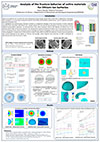
Davide Clerici, Politecnico di Torino, Italy
Francesca Pistorio, Politecnico di Torino, Italy
Abstract
Lithium-ion batteries are currently the most widespread energy storage system with a wide field of applications. Nowadays, their durability is a crucial topic among the research community, since batteries performances, such as capacity and power, decrease during life cycle.
It is highlighted that performances decrease is linked to a progressive damage of the micro-structure of active materials, caused by their interaction with lithium ions. Indeed, lithium ions are inserted and extracted in the host structure of active material during battery operation. At micro-structure level, these processes result in the diffusion of lithium ions in the particles which make up the active material. The consequently uneven distribution of lithium ions in the particles causes the rise of mechanical stress, which ultimately results in damage and fracture propagation in active material microstructure.
Crack propagation is studied with a finite element model in Ansys APDL to predict the influence of micro-structure geometry and current delivered by the battery on fracture and damage.
Energy
27. Design and analysis of multi-stable structures
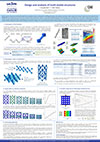
Josue Aranda-Ruiz, University Carlos III of Madrid, Spain
Carlos Valls-Toboso, University Carlos III of Madrid, Spain
Abstract
In this work we have numerically analyzed the multistability process in metastructures of different topologies: rows, plates and cylinders. 3D numerical models have been developed using Abaqus/CAE and validated with results from the literature, studying the influence of the different geometrical parameters that define these metastructures on their elastic energy absorption capacity. The comparison between quasi-static and dynamic behavior has been carried out, establishing remarkable differences in the stabilization process. The auxetic behavior of plate-type metastructures has been studied.
Mechanics
28. Prediction of microstructure for AISI316L steel from numerical simulation of laser powder bed fusion
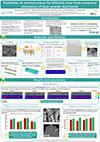
Maria Beatrice Abrami, University of Brescia, Italy
Muhannad Ahmed Obeidi, Dublin City University, Ireland
Marialaura Tocci, University of Brescia, Italy
Dermot Brabazon, Dublin City University, Ireland
Annalisa Pola, University of Brescia, Italy
Abstract
Laser powder bed fusion (L-PBF) is the most promising additive manufacturing technology for metals. Numerical simulation software represent a powerful tool for its improvement, as provide solidification data useful for microstructure prediction. Austenitic stainless steel 316L exhibits a cellular microstructure when produced by L-PBF. Primary cell arm spacing (PCAS) is the characteristic feature of this microstructure, on which the mechanical properties depend. The aim of this work is to estimate the PCAS and the microhardness of 4 tracks of 316L by using FLOW-3D AM and validate the model.
Mechanics
29. Patient-specific stomach modelling before and after laparoscopic sleeve gastrectomy
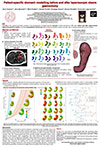
Ilaria Toniolo, University of Padova, Italy
Alice Beraldo, University of Padova, Italy
Mirto Foletto, Bariatric Unit – Week Surgery, Padova University Hospital, University of Padova, Italy,
Claudio Fiorillo, Digestive Surgery Unit, Fondazione Policlinico Universitario Agostino Gemelli IRCCS, Rome, Italy
Giuseppe Quero, Digestive Surgery Unit, Fondazione Policlinico Universitario Agostino Gemelli IRCCS, Rome, Italy
Silvana Perretta, IHU Strasbourg, Strasbourg, France
Emanuele Luigi Carniel, University of Padova, Italy
Abstract
Morbid obesity has become a global epidemic and bariatric surgery is the best strategy to deal with it. Laparoscopic Sleeve Gastrectomy (LSG) is the most performed procedure. The study aimed to improve the after-surgery success in the long run. The patient-specific modeling of pre- and post-surgical models of patients with morbid obesity who underwent LSG were developed from MRI scans. The simulations focused on the changes induced by bariatric surgery, i.e., the volumetric gastric reduction, the mechanical response of the stomach during an inflation process and the related elongation strain.
Biomechanics
30. Modeling the discharge properties for isolated test masses in gravitational reference sensors for fundamental space measurements
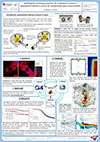
Davide Vignotto, University of Trento, Italy
Valerio Ferroni, University of Trento, Italy
Abstract
Gravitational reference sensors provide test masses (TMs) following geodesic trajectories that are the preferred reference for precise measurements in space, such as gradiometry, small forces and gravitational wave detection. TM charge, accumulated from space environment, perturbs the inertial motion and must be controlled via contact-free photoelectric device. Because of complex geometries, FEM is needed to model the photoelectrons dynamics to recover the TM discharge properties. We show the TM discharge curves are in full agreement with experimental data and improve analytical model results.
Aerospace
31. Am-aware design integrated workflow
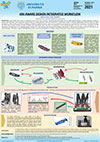
Federico Uriati, University of Parma, Italy
Gianni Nicoletto, University of Parma, Italy
Abstract
Laser Powder Bed Fusion is considered as one of the most innovative manufacturing technologies and has rapidly gained interest in industry because it allows to produce near-net-shape metal components characterized by complex geometry. Parts with geometrical characteristics driven by optimized lightweight trade-offs would be readily produced by L-PBF and when combined to adequate strength are of great interest for sectors such as automotive and aerospace. In parallel with the evolution of the AM technology, the finite element-based software provides simulation and optimization tools that allow full exploitation of 3D printing potential. The main aims of this contribution are the presentation and discussion of an integrated design workflow of a metal AM part from geometrical topological optimization to AM process simulation actual part fabrication in an industrial-grade L-PBF system using the AlSi10Mg alloy powder and structural qualification by fatigue testing of actual parts under realistic working conditions.
Mechanics
32. Computational Cell Biomechanics
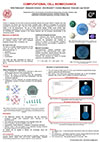
Sofia Pettenuzzo, University of Padova, Italy
Alessandro Arduino, University of Padova, Italy
Alice Berardo, University of Padova, Italy
Carmelo Majorana, University of Padova, Italy
Emanuele Luigi Carniel, University of Padova, Italy
Abstract
It has been observed that cancerous cells have a different mechanical behaviour with respect to healthy cells, and that also cell subcomponents play a key role in many biological processes such as proliferation, differentiation and migration. Since the experimental investigation is complex and not straightforward, the aim of this research is to describe the cell biomechanics by means of computational finite element models, thus providing the mechanical contributions of the cell subcomponents, the identification of the involved variables and the validation of the mechanical results.
Biomechanics
33. Original heat exchanger design for additive manufacturing
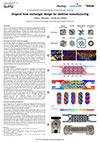
Jonathan Roncolato, SUPSI DTI, Switzerland
Josef Bellea, SUPSI, Switzerland
Luca Cornolti, SUPSI DTI, Switzerland
Maurizio C. Barbato, SUPSI DTI, Switzerland
Abstract
The design of a new type of heat exchanger, that can replace a shell and tube one mounted on a Computer Controlled Heat Exchanger Service Module developed by Armfield, was investigated considering the opportunities offered by additive manufacturing.
An original ultracompact heat exchanger was conceived, numerically tested and preliminarily printed as a polymeric mockup. The final layout combines the potentialities of additive manufacturing, in terms of flexible and innovative solutions, and other traditional elements into a custom-design tailored to the specific system constrains.
Energy
34. Nonlinear Compliant Gear Statics & Dynamics
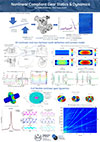
Fabio Bruzzone, Politecnico di Torino, Italy
Carlo Rosso, Politecnico di Torino, Italy
Abstract
In this poster the results obtained with the GeDy TrAss software are shown. The program implements a nonlinear and non-Hertzian 3D model to accurately compute the deflections under load of geared transmissions with great accuracy and speed. The computed Static Transmission Error (STE) and contact pressure maps are then used in a powerful and new nonlinear dynamic model. This model is able to capture the behavior of complex transmission systems including the effect of flexible body and shaft modes, as well as including bearing and casing influence.
Mechanics
35. Material coextrusion modeling and characterization in additive manufacturing
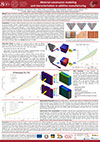
Riccardo Sponchiado, University of Padova, Italy
Pierandrea Dal Fabbro, University of Padova, Italy
Gianpaolo Savio, University of Padova, Italy
Stefano Rosso, University of Padova, Italy
Luca Grigolato, University of Padova, Italy
Roberto Meneghello, University of Padova, Italy
Gianmaria Concheri, University of Padova, Italy
Abstract
Latest innovations in additive manufacturing have made it possible to use multiple materials simultaneously, allowing to locally change the properties of the parts produced in a way that has never been done before. A wide range of properties achievable by FDM printing are available, but models describing physical properties as function of the material combination and the extruder path are essential for the designer. In this work, a model of the elastic modulus of coextruded parts produced by Fused Deposition Modeling is proposed. The chosen materials for this work are PLA and TPU. In order to do that a basic model is developed to compute the young’s modulus and compared with a FEM analysis of the tensile test on variable composition specimens. The results are then validated by mechanical characterization of the manufactured parts.
Mechanics
36. Design of Optimized Conformal Lattice Structures
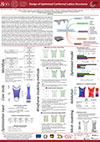
Pierandrea Dal Fabbro, University of Padua, Italy
Stefano Rosso, University of Padua, Italy
Alessandro Ceruti, University of Bologna, Italy
Luca Grigolato, University of Padua, Italy
Riccardo Sponchiado, University of Padua, Italy
Diego Boscolo Bozza, Enginsoft SpA, Italy
Roberto Meneghello, University of Padua, Italy
Gianmaria Concheri, University of Padua, Italy
Gianpaolo Savio, University of Padua, Italy
Abstract
Nowadays the commercial software proposes different solutions for designing lattice structures, but still, there are no flexible tools for geometric modeling and validating conformal lattices. A conformal lattice structure can conform to the external shape of the part or to the principal stress direction taking the information from a Finite Element Analysis (FEA). This allows increasing the performance of the structures with respect to the regular ones. The available geometric modeling approaches for lattice structures are based on Non-Uniform Rational Bicubic-Splines (NURBS) or mesh. They require Boolean, offsetting, and filleting operations demanding high computational resources and time, and, even worse, they often fail; furthermore, lattice structures with a high number of elements are difficult to manage and visualize. Also, the prediction of mechanical properties is an open challenge due to the different anisotropic behavior of different cells inside the structure; this different behavior leads to the impossibility of applying the asymptotic homogenization (AH) method, widely used in composite materials and uniform lattice structures to avoid discretizing the lattices into solid models with a huge number of elements. To overcome these limits, the work aims at proposing a workflow for the design and size optimization of beam-based conformal lattice structures, involving mono-dimensional elements in the structural analyses. First, four approaches for modeling the wireframe of a simple cubic conformal lattice structure are presented, then an iterative variable size optimization method is performed, and finally, two linear structural analyses based on mono-dimensional elements are performed and compared. These methods are automated in IronPhyton programming language scripts inside Grasshopper (Rhinoceros 7 software) and Ansys 2020 R1 software through Mechanical APDL scripts. Applying the beam theory in the numerical analyses reduces the computational time and costs and allows for the computation of the behavior of the conformal structures almost in real time. Finally, a mesh modeling method is adopted together with the Catmull-Clark subdivision surface algorithm to obtain a lattice structure model with smooth surfaces, especially at the nodal zones where no further filleting operations are required. The results show that the analysis methods give reliable results and that, among the wireframe creation methods, the one based on the NURBS Free-Form deformation shows the most flexible solution being able to easily conform to boundaries of various shapes.
Mechanics
37. Simulation of light propagation into microfluidic devices and prediction of the absorption profile of substances
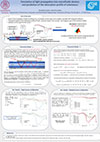
Elisabetta Bodo, University of Pavia, Italy
Valentina Bello, University of Pavia, Italy
Abstract
In this work, we present a sophisticated theoretical model implemented in MATLAB environment to study the propagation of light travelling into a rectangular-section glass micro-capillary provided with integrated reflectors. A theoretical analysis of the absorption profile of fluids (pure substances such as mixtures) in single and multiple bounce configuration is conducted to obtain predictions that could be compared with the experimental spectral data, acquired through a Labview interface and elaborated in MATLAB environment.
Electronics
38. A computer-aided analysis of single scan tracks for an accurate and time-saving evaluation of LPBF building parameters
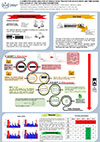
Fabrizio Marinucci, Politecnico di Torino, Istituto Italiano Tecnologia, Italy
Alessandra Martucci, Politecnico di Torino, Italy
Alberta Aversa, Politecnico di Torino, Italy
Diego Manfredi, Politecnico di Torino, Istituto Italiano Tecnologia, Italy
Federica Bondioli, Politecnico di Torino, Italy
Mariangela Lombardi, Politecnico di Torino, Italy
Abstract
Laser Powder Bed Fusion (LPBF) is one of the most common techniques of the Additive Manufacturing processes. To produce fully dense samples, there are several very important process parameters to optimize as laser power (P), scan speed (v), layer thickness (Lt), and hatching distance (Hd). To achieve this goal one of the most used method is the Single Scan Track (SST) approach, that consists in analyzing single scan laser tracks in order to obtain the best combination of the process parameters. The traditional method of SSTs analysis consists in observation on TOP of the track, choosing the best ones in term of continuity and regularity. This method is affected by operator error and it is not time effective. This study proposes and automated analysis of SSTs TOP view by two script implemented in ImageJ. The script allows to analyze several images in few minutes, giving an objective final result in term of regularity of SSTs.
Aerospace
39. Study of the dynamic response of a counterbalance forklift truck by means of experimental measurements and numerical models
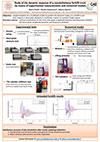
Marco Pinelli, University of Bologna - School of Engineering, Italy
Monica Giovannucci, Toyota Material Handling Manufacturing Italy SpA, Italy
Alberto Martini, University of Bologna, DIN - Dept. of Industrial Engineering, Italy
Abstract
The project aims at implementing numerical multibody models to predict the dynamic loads acting on counterbalance forklift trucks executing verification tests according to the manufacturer’s protocols. The presented case study focuses on one of the most critical maneuvers in terms of dynamic loads, namely the passage on a steel plate obstacle at high speed. A model of the complete forklift is developed by using the commercial multibody software Recurdyn. Experiments are conducted to characterize the vehicle behavior in the condition of interest, by measuring the chassis/mast vibrations and the mast tilting forces. After model updating and validation, the numerical simulations proved an accurate prediction tool.
Mechanics
40. The filling process of a flexible pouch: two-way coupling of particle-based CFD and multi-flexible-body dynamics simulation

Matteo Berlato, University of Trento, Italy
Abstract
Packaging companies are always striving to stay one step ahead of their competitors in providing the best solutions for production capacity and quality, preserving the versatility of their machines. Many variables affect the dynamic behavior of components and products when accelerations are considerable. Coesia partnered with the University of Trento and EnginSoft to simulate a stand-up pouch packaging machine (Doypack®). The ambitious goal of deeply understanding the process in each stage and selecting the best set of parameters is addressed in this work by performing a co-simulation study.
Food & Beverage
41. Metacarpal Glove Model for Impact Testing Simulation on Human Hand

Eduardo M. Sosa, West Virginia University, United States of America, Morgantown, West Virginia
Marta M. Moure, Universidad Carlos III of Madrid, Madrid, Spain
Álvaro García Rincón, Universidad Carlos III of Madrid, Madrid, Spain
Abstract
This work presents a model created to reproduce the impact of a small-sized, low-mass object impacting the dorsum of a flattened hand wearing a metacarpal glove. A finite element model of the hand and glove was created with the CAE module available in Simulia/Abaqus. The model includes the complete hand bone structure, surrounding soft tissues, and the layers of a metacarpal glove. The simulations include impacts on the fingers, knuckles, and metacarpal regions of the hand. The impact reaction forces are computed to be compared to controlled impact tests performed on cadaveric hands.
Biomechanics
42. Mechanism & Behaviour Co-Optimization of High Performance Robots
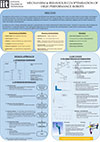
Antonios Emmanouil Gkikakis, Istituto Italiano di Tecnologia (IIT), Genova, Italy
Abstract
The objective of this research is to introduce a systematic and scientifically-driven approach to design robots, which can allow robots to utilize today’s technology to its maximum potential , and achieve unprecedented performance with less resources. Designing robots is a complex procedure and involves multiple mechanical and electrical parts, each with their own complexity, capabilities and limitations. The complexity of all these components, together with the robot’s intended use, make robot design a challenging task. To address this issue a design optimization approach is proposed that uses realistic mathematical models of the robot’s hardware in conjunction with simulations of the tasks that it is required to perform. Then, optimization approaches are used to discover the most physically fit robots based on requirements, available resources, and uncertainties in the real world that affect the final performance.
Biomechanics
43. A mechanical and computational model for patient-specific brain tumour growth
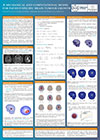
Giulio Lucci, Politecnico di Torino, Italy
Chiara Giverso, Politecnico di Torino, Italy
Abramo Agosti, University of Pavia, Italy
Pasquale Ciarletta, Politecnico di Milano, Italy
Abstract
We develop a mathematical model to study the growth of Glioblastoma Multiforme, which is a very aggressive type of brain cancer. Our model is able to describe the proliferation of the tumor accounting for its mechanical impact on the healthy tissue. Moreover, patient-specific data reconstructed from medical imaging are included in our simulations, to realistically reproduce the brain environment in silico. The computational meshes based on medical data are reconstructed using dedicated C++ and Python libraries, while numerical simulations are performed using the Python-based interface FEniCS.
Biomechanics
44. Automated fatigue strength assessment of steel joints with weld ends in automotive design according to the Peak Stress Method
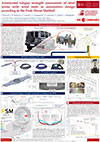
Jacopo Pelizzari, University of Padua and Carraro S.p.a., Italy
Mattia Maltauro, University of Padua, Italy
Alberto Visentin, University of Padua, Italy
Alberto Campagnolo, University of Padua, Italy
Francesca Uccheddu, University of Padua, Italy
Carlo Dengo, Carraro S.p.a., Italy
Giovanni Meneghetti, University of Padua, Italy
Abstract
To ensure the performances of off-road vehicles the suspension group is crucial. A simplified joint geometry has been developed capturing the tube-brackets welds details of the axle to assess the fatigue strength of the welded connections. The Peak Stress Method estimates the crack initiation point and the fatigue life of welded structures under multiaxial stress states. The welds were reverse engineered obtaining a geometry then introduced in a FE model and analysed according to PSM. A digital twin of the real welded joint is created comparing experimental results with theoretical previsions.
Automotive
45. Interpreting Geological Structures with Numerical Models: A Study on Rock-Melt Patterns
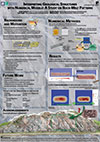
Giulia Fedrizzi, University of Leeds, UK
Sandra Piazolo, University of Leeds, UK
Sam Pegler, University of Leeds, UK
Oliver Harlen, University of Leeds, UK
Abstract
Significant parts of the lower and middle crust of the Earth are known to be partially molten when at depth, with consequences on crust rheology and structure. This study aims to numerically reproduce geometrical patterns of partially molten rocks and provide an interpretation for their formation. Our model uses a two-grid approach: a network of springs for the solid phase (discrete element) and porous flow (continuum) for the fluid. The solid can be fractured by external deformation and/or an increase in fluid pressure. This increases permeability and favours mobility in the fluid phase.
Environmental
46. Definition of a 3D modeling method to create and test customized knee implants
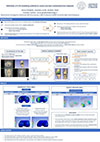
Anna Ghidotti, University of Bergamo, Italy
Daniele Landi, University of Bergamo, Italy
Andrea Vitali, University of Bergamo, Italy
Abstract
The knee is one of the most complex joints in the human body. It includes three main bones: the distal end of the femur, the proximal end of the tibia, and the patella. In this context, the present research utilizes FEA to perform analysis on a knee in three different situations. The first case is the healthy condition, that represents the reference point for further studies. In the second case, a surgical planning with an off-the-shelf prosthesis is performed following a kinematic alignment. The third case employs a custom-made implant. FEA is performed on all the three cases in order to understand which of the two implants better restore the normal condition, in terms of stress and pressure distribution.
Biomechanics
47. Modeling explosive events using the CESE method
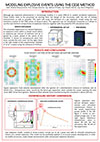
Matteo Mazzocchetti, Politecnico di Torino, Italy
Giorgio Zavarise, Department of Structural, Geotechnical and Building Engineering (DISEG), Politecnico of Turin, Italy
Alfonso Ortalda, EnginSoft, Italy
Claudio Martin, EnginSoft, Italy
Dario D'Agostino, EnginSoft, Italy
Abstract
Although gas explosive phenomenon is increasingly studied, it is quite difficult to predict accidental explosions. These events need to be prevented starting from the design of the structures, with the aim of making environments as safe as possible. This work will study the behavior of a gas explosion model using the new chemistry module of the CESE solver of Ansys-ls-dyna. This approach is innovative as it allows to use the real chemical compositions of explosive mixtures together with the CFD calculation tools. The simulated experiment is a Vented Explosion, an explosive event within a closed vessel where an explosive gas mixture of methane and air is ignited by a spark. It causes an overpressure wave that vents outside the vent cover.
Mechanics
48. Optimization of Mechanical Components of a High-Altitude Wind Generator

Martina Picoco, Politecnico di Torino, Italy
Giorgio Zavarise, Department of Structural, Geotechnical and Building Engineering (DISEG), Politecnico of Turin, Italy
Gian Mauro Maneia, Kitenergy S.r.l., Turin, Italy
Giuseppe Quaglia, Department of Mechanical and Aerospace Engineering (DIMEAS), Politecnico of Turin, Italy
Abstract
In this work, a particular energy source is taken into account: high altitude wind energy, produced by KE60 mkII prototype, Kitenergy. The goal of the project is the mechanical redesign of some machine components and a topological optimization through the use of Ansys Mechanical Solver, after a deep evaluation of the prototype behaviour under different loads. The currently oversized system components that needed redesign were analyzed, in order to achieve a reduction of manufacturing costs of the future commercial product. Eventually, the desired structure was subjected to solid modeling in a 3D CAD environment and validation through finite element analysis. The redesign process seems to have achieved remarkable results in terms of optimizations of various prototype components and have been favorably accepted by Kitenergy and some of these will be included and evaluated in the future prototype revision plan.
Mechanics


